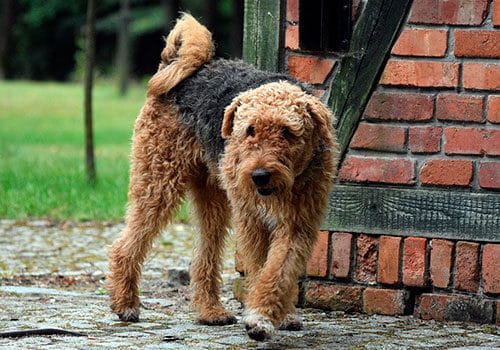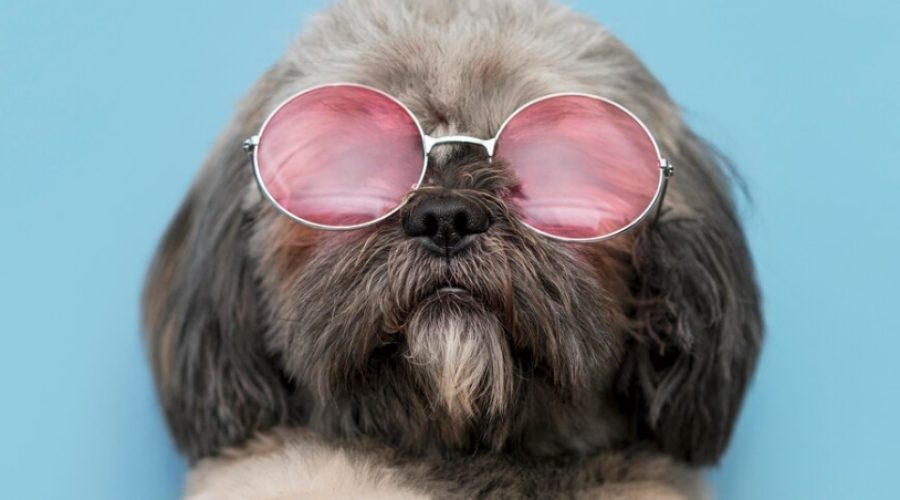Hypoallergenic dogs: a balanced approach to choosing a breed and care tips
There is a problem: dog allergy!

The number of allergy sufferers is growing every year. Pet allergies already affect 10-20% of the world’s population. Scientists predict that the situation may only get worse in the future.
People are allergic to wool in the form of sneezing, runny nose, and nasal congestion. It also causes itchy skin, coughing, shortness of breath, breathing problems, watery eyes… Very unpleasant symptoms, you will agree. But despite this, allergy sufferers also want a faithful and loyal dog waiting for them at home. And a hypoallergenic dog would be the ultimate dream for such people.
So why do allergic reactions occur (and prevent people from fully enjoying communication with their favorite pet)? Saliva, particles of dead epidermis, feces, and, of course, dog hair contain a special protein. It is a strong allergen. Its particles can settle on carpets and upholstery, mix with dust and provoke a violent reaction in an allergic person, even if the dog is not in direct contact with it.
What should you do in this case? Of course, most likely, in case of severe allergic manifestations, the dog will have to be relocated to another place and it will be impossible to contact it. A less radical way out of this situation is to take special allergy medications. You can also undergo ASIT – allergen-specific immunotherapy, in which an increasingly large dose of an allergen is gradually introduced into the human body on a regular basis. It is believed that ASIT can reduce symptoms or even eliminate them altogether.
Are hypoallergenic dog breeds a reality or a myth?
An anti-allergenic dog could live with you and not provoke a violent reaction. But is this really the case? Unfortunately, the existence of dogs that do not cause allergies is just a myth. It has been scientifically proven that the hair samples of such dogs also contain the same amount of Can f 1 allergen as the hair of non-hypoallergenic breeds. The Can f 1 protein is found not only in the coat, but also in saliva, dander, and urine.
Despite the fact that some owners of “hypoallergenic” breeds believe that their allergic symptoms are much less pronounced than when they come into contact with non-hypoallergenic dogs, there is no scientific evidence for this. Simply put, there are no completely hypoallergenic dogs.
However, there is no need to be upset. And now we will tell you why.
Dog breeds that are best suited for allergy sufferers
Yes, we won’t call these canines “hypoallergenic”, let’s just say that according to allergy sufferers who live with dogs, such pets do not cause a strong reaction to Can f 1 protein.
So, a poodle. Why are these curly-haired dogs on the list of breeds for allergy sufferers? It’s all about their curly hair. When a dog sheds, its hair does not fall out in a waterfall everywhere, but stays in the curly coat, from where it can be successfully combed out. Or you can take the dog to the groomer to have it done for you. Poodles are also not prone to dandruff, they have little salivation, they shed very little, and such pets are also famous for their cleanliness. They are easy to train, learn commands, and (unexpectedly!) hardly smell. A poodle can live in a city apartment or in a private house in the countryside, if you are shown to live closer to nature for health reasons.
An Erdelterrier. This is a large dog and its coat cannot be called curly. The hard and tightly fitting coat almost never falls out, although with this low-allergenic feature, the Erdelter requires constant grooming in the grooming salon. It is there that the coat is groomed, when dead hairs are removed, leaving only a renewed coat. You won’t see skin peeling on these dogs either. Neat and well-mannered Erdelterriers also do not salivate. It is not easy to teach such a dog commands, but it is possible if you want to. Unfortunately, this breed of dog is not the best for living in an apartment because they are very active and need regular, long physical and mental exercise.
Riesenschnauzer. These dogs for allergy sufferers are also not prone to drooling; they do not even like to lick anything, including their beloved owner. They are not prone to dandruff and skin peeling, and shed very little. Riesenschnauzers are very obedient and follow the established rules. With proper training and regular exercise, this dog can live with you not only in the house but also in an apartment.
Pomeranian Spitz. A small dog, and a very fluffy one at that, how can it be included in the category of low-allergenic breeds? In fact, Pomeranians produce a small amount of allergenic protein, and if you constantly comb this fluffy dog (at least 2-3 times a week, and daily during molting), the risk of developing allergies in humans is reduced. It is important to remember that this pet is very active, barks loudly, can be picky about food, and can be a bit annoying.
Yorkshire Terrier. The structure of their coat resembles human hair, which is why they are also on our list. They hardly smell, shed little or no hair, and are not prone to dandruff. Yorkies are very compact and can be carried everywhere. These dogs will brighten up everyone’s leisure time and dull everyday life.
Shih Tzu. It also has a coat similar in structure to human hair. The Shih Tzu does not lend itself well to training, but it is also one of the breeds that provokes the least allergies in humans.
How to get along with an allergic dog?How to get along with an allergic dog?
What else can you do to make living with your pet more fun and not let allergies overshadow your friendship?
Do not allow your pet in the bedroom and especially on the bed.
The mattress, pillows, and bed should be packed in special covers that protect against allergens.
If allergies really interfere with your life, you can try zoning the room so that the dog is in the space that is allotted to it.
Wet clean the room daily. Use a vacuum cleaner, air purifier, air conditioners, and other appliances.
Get rid of dust accumulators: carpets, curtains, old upholstered furniture that has served its purpose, and so on.
After playing with your dog, always wash your hands with soap and water. Try to avoid touching your face as much as possible.
And that’s it. E-ZOO online store wishes everyone health and many happy moments with our tailed friends!

